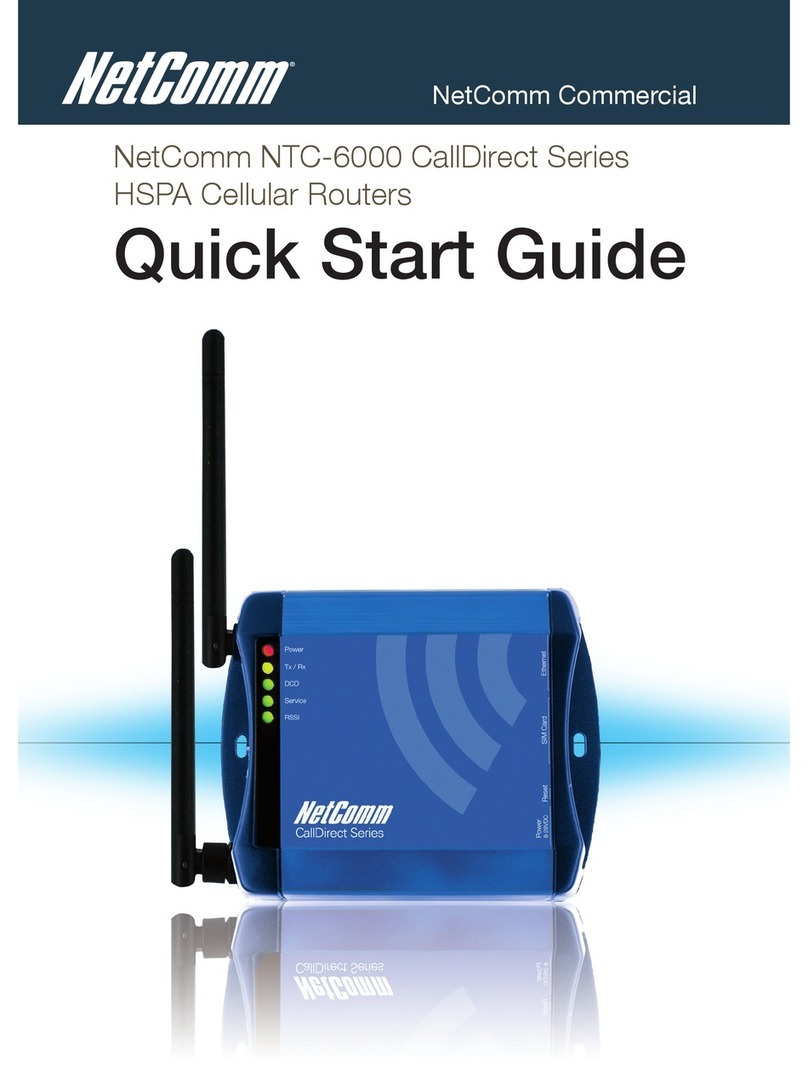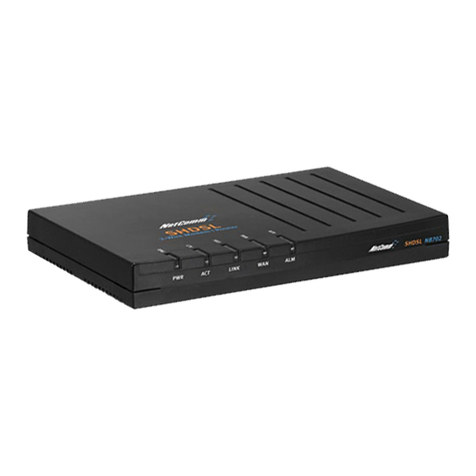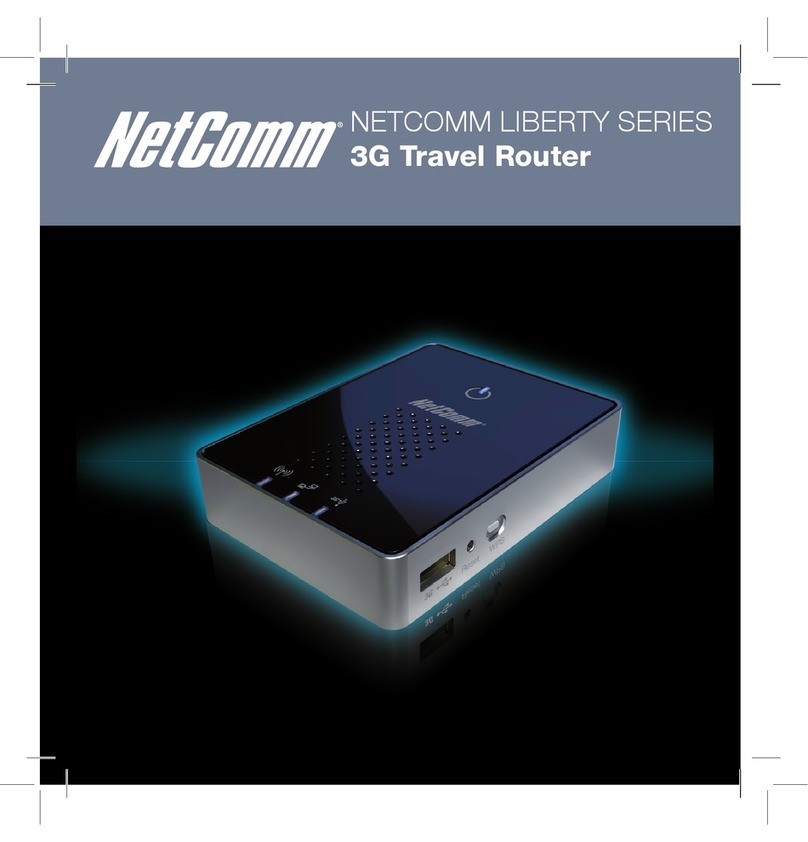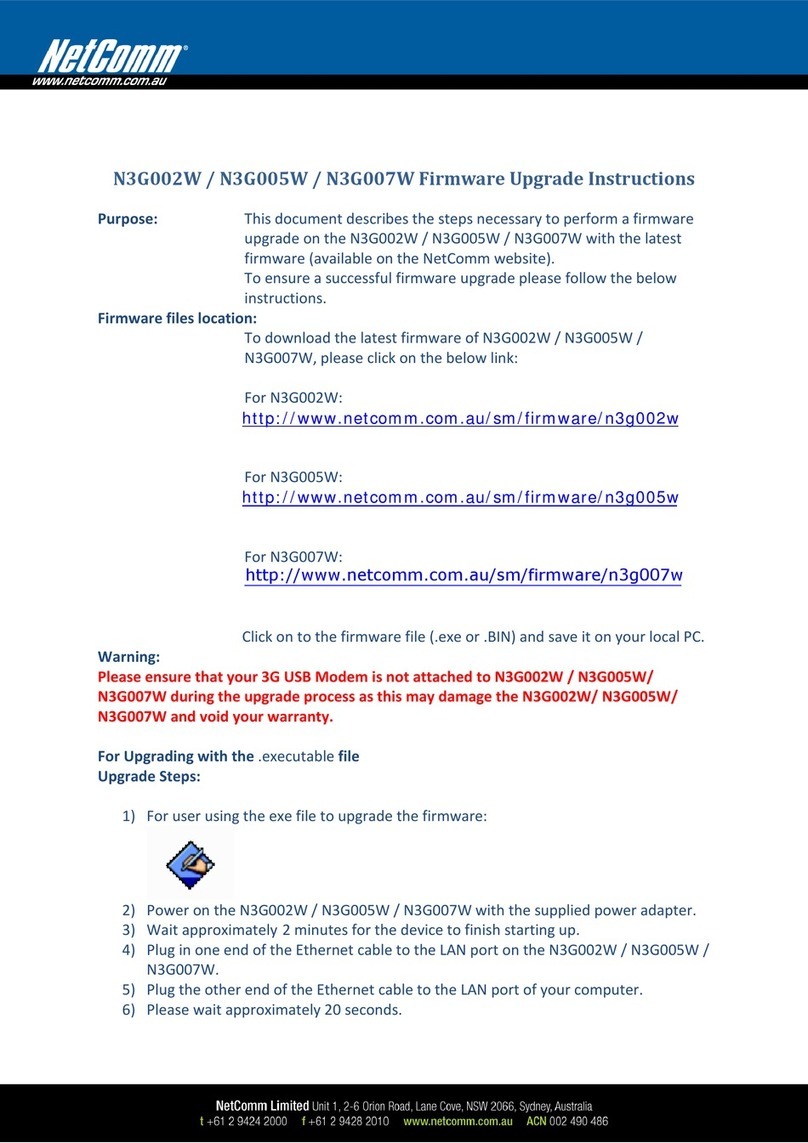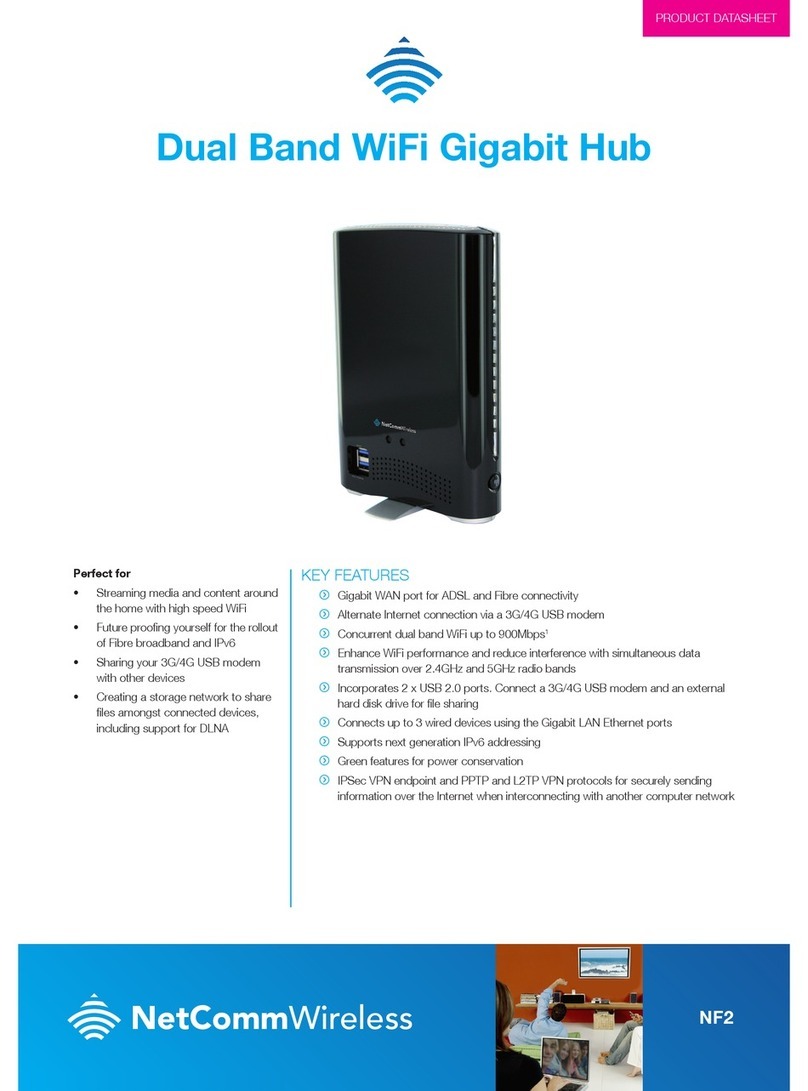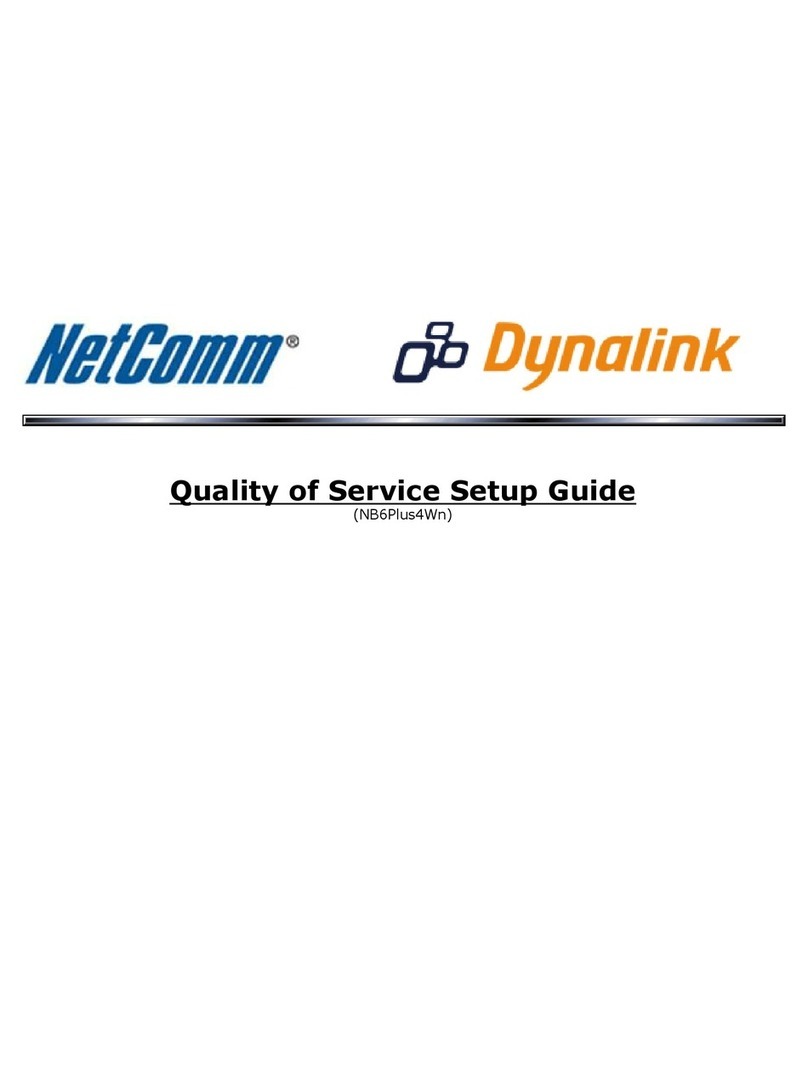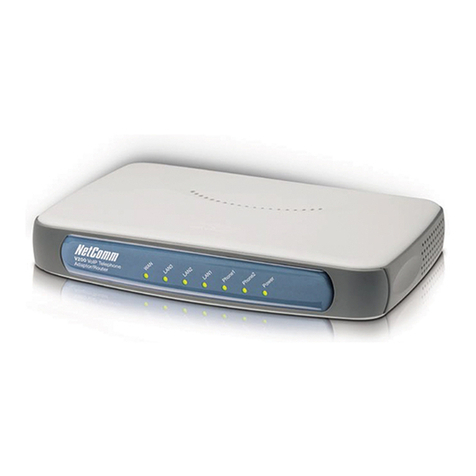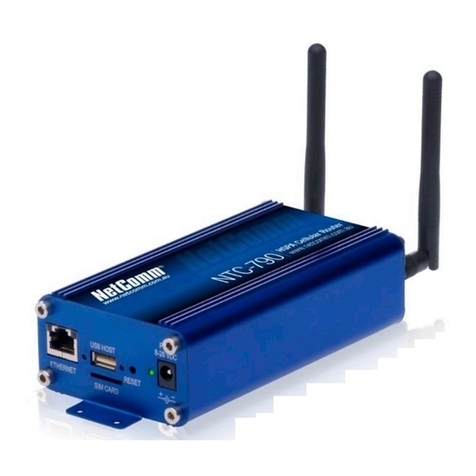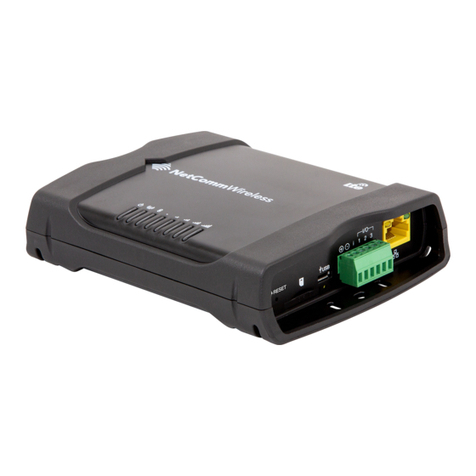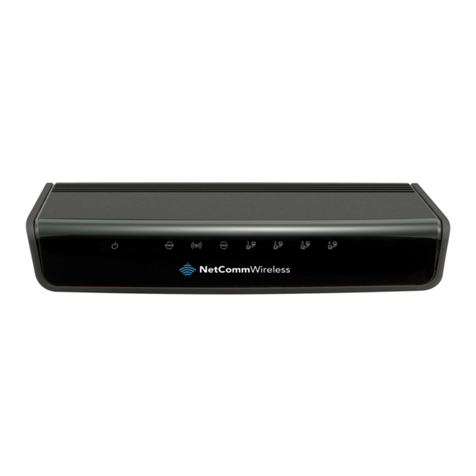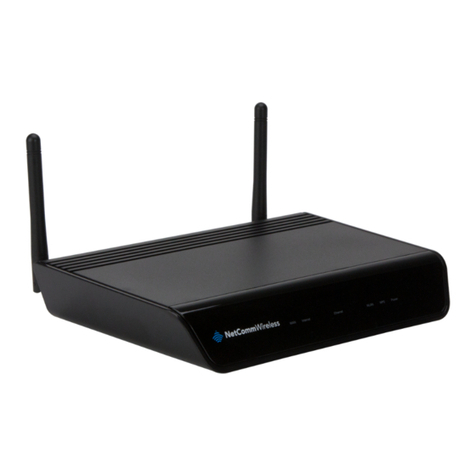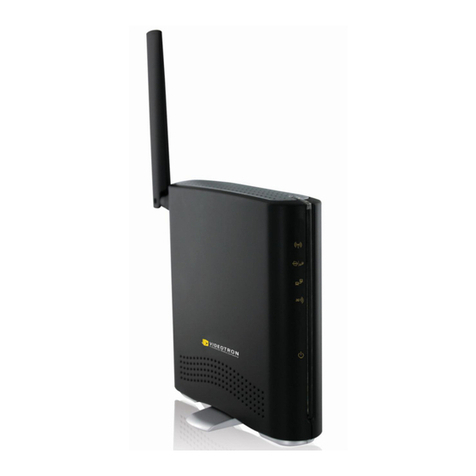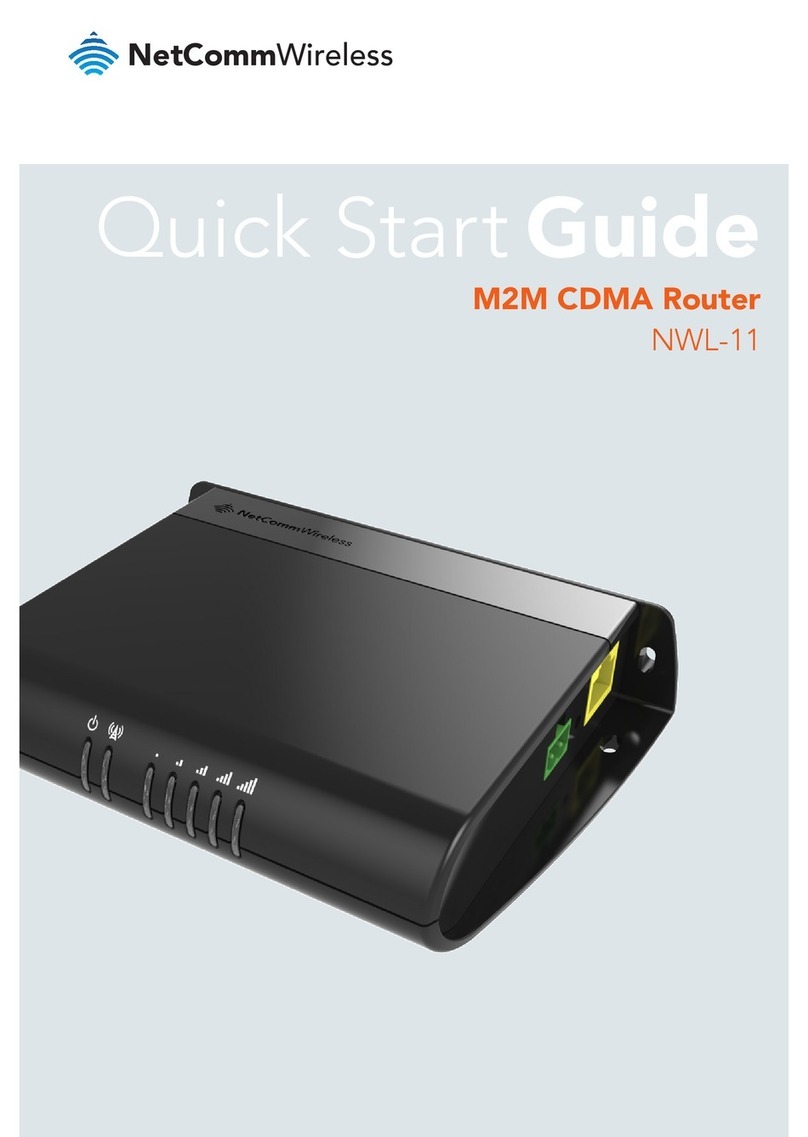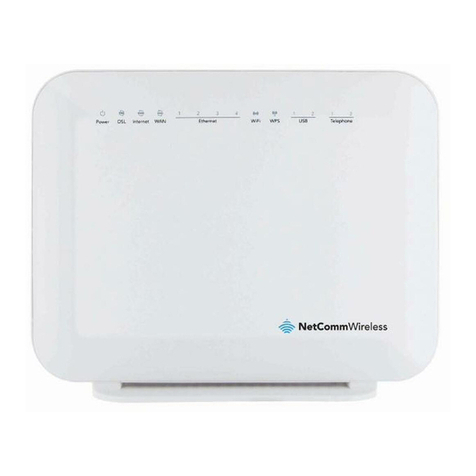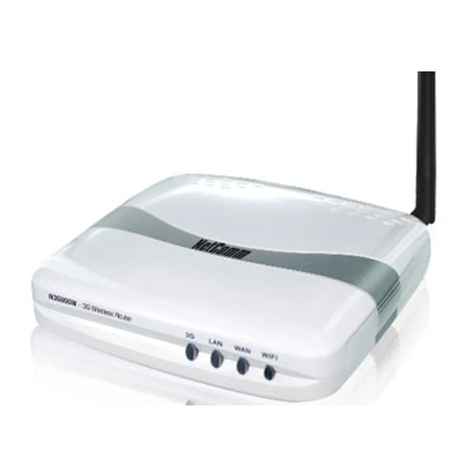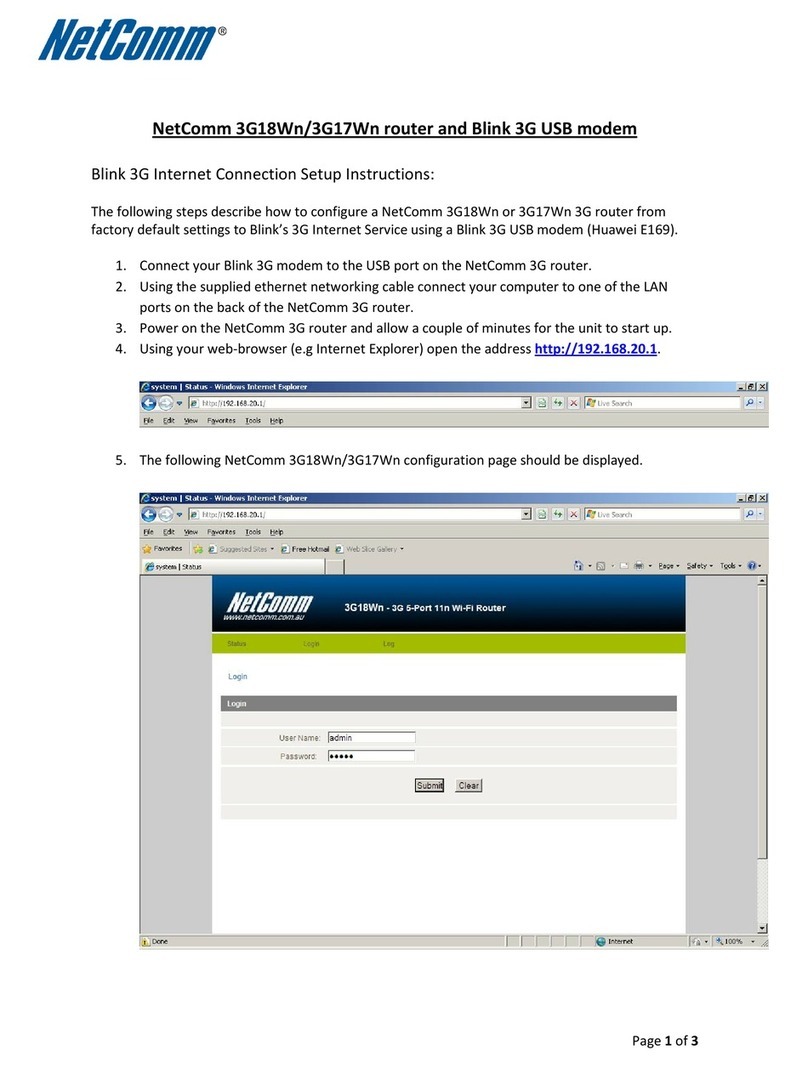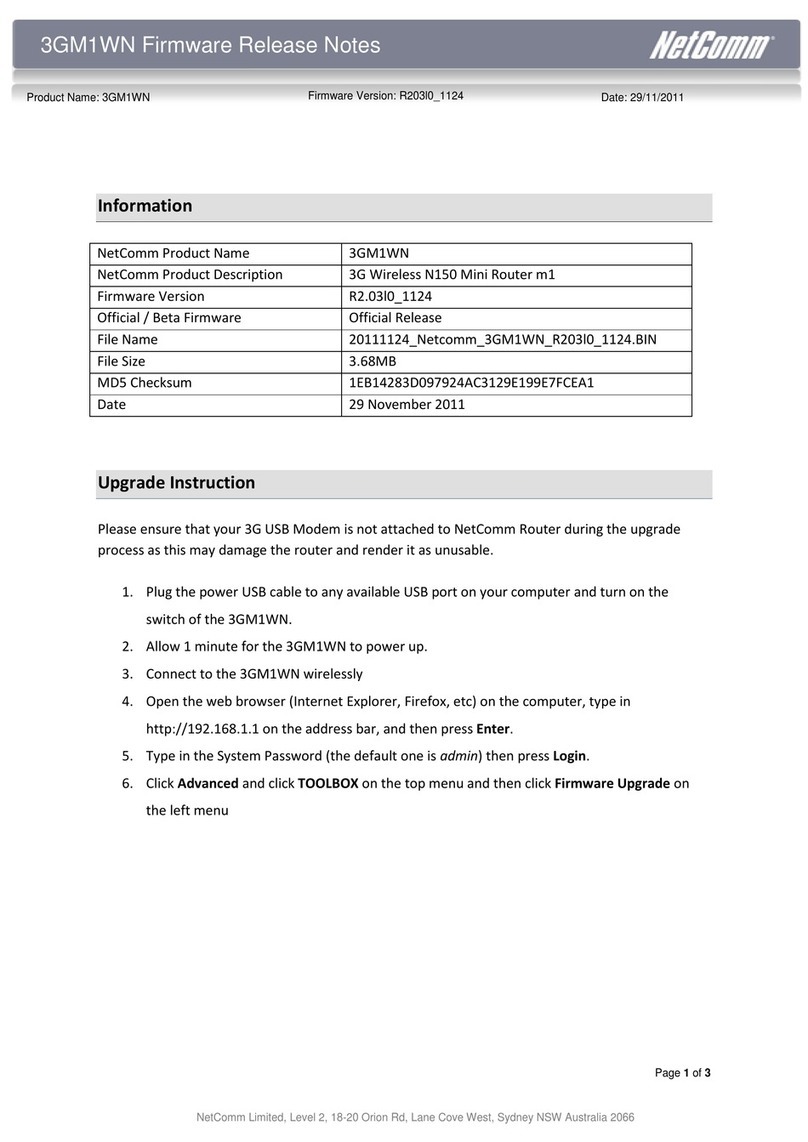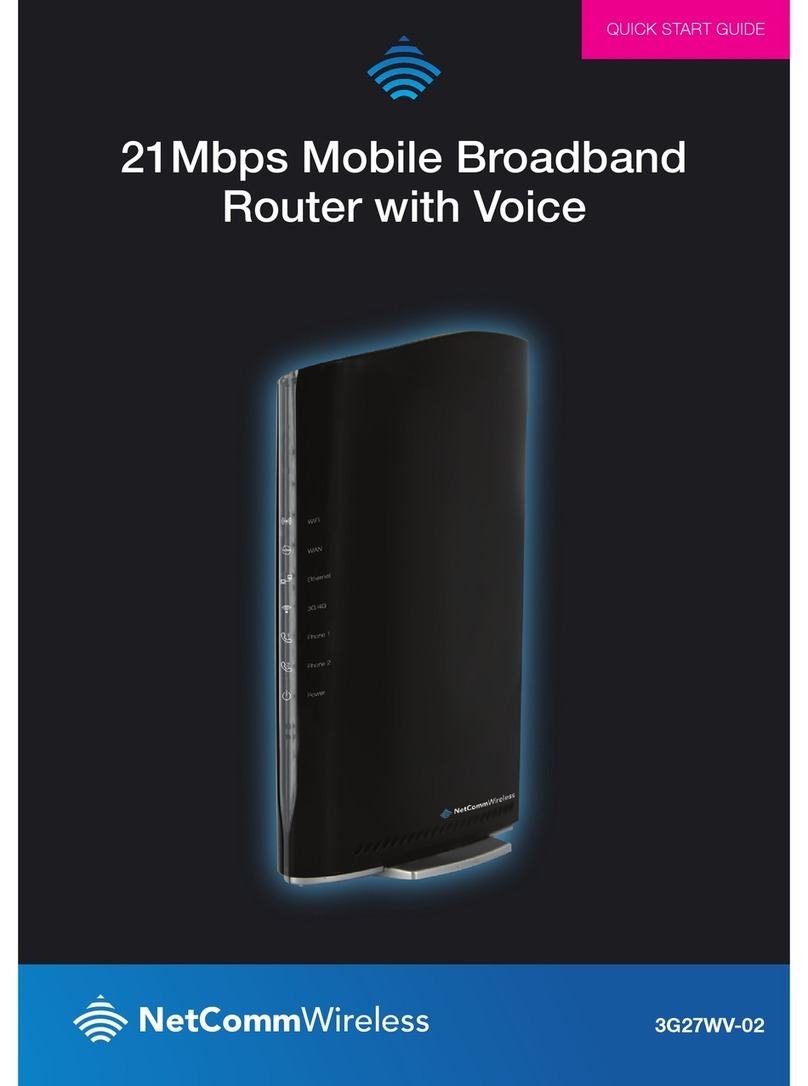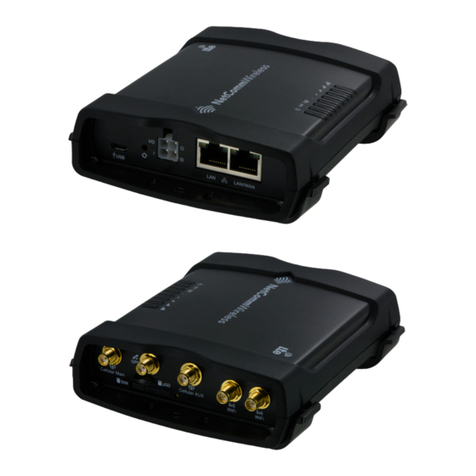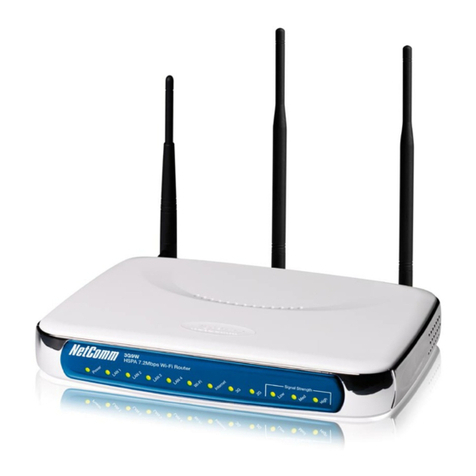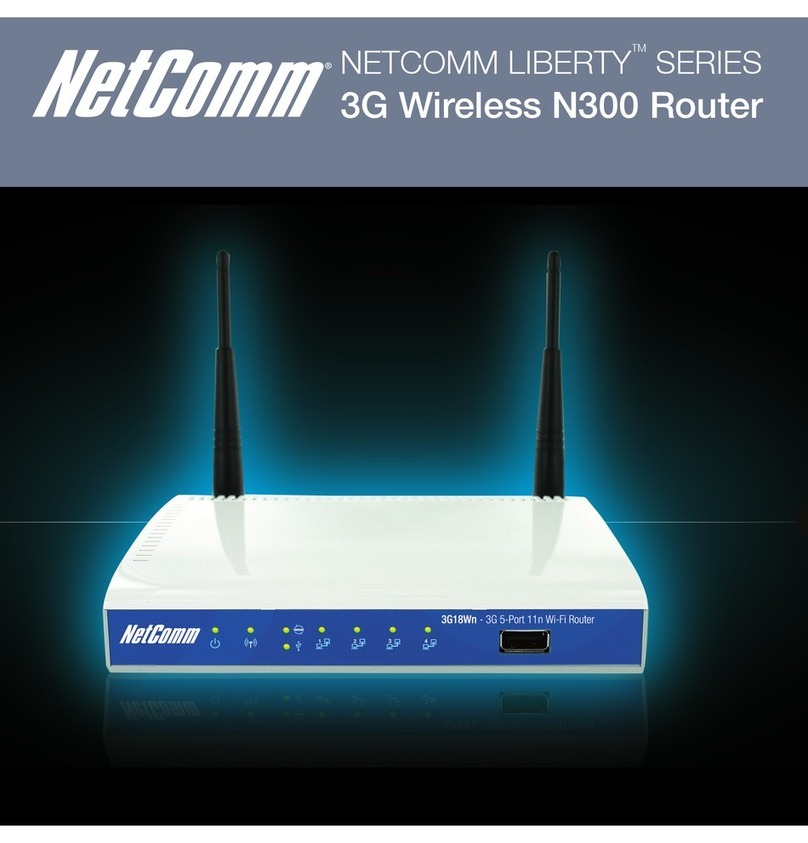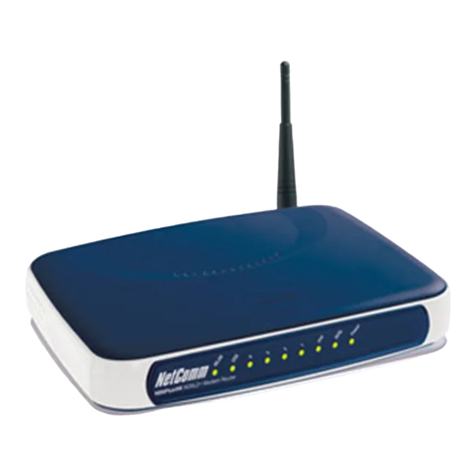right to left In addition the phone
sockets are upside down compared
to the Ethernet sockets The
LinksysSipura
SPA-2100 has small
low-contrast labels beneath the
colour-coded ports Its activity
lights are also on the back panel
The very
compact D-Link
DI-102
also uses colour
coding and the
contrastis reasonable (though the
text is smaller
than we’d like Its
stablemate the DVG-G1402S
has
larger and clearer
labelling
and all
the connectors are aligned the
same way It’s
just a shame the
ports are numbered from right to
left The NetComm
V300 gets our
vote for the clearestlabels
consistently
aligned connectors
and left-to-rightport
numbering
Plugpack size can also be an
issue in clutteredenvironments
The LinksysWRT54GP2 Netgear
TA612V and D-Link
DVG-G1402S
use traditional
designs that take
up more than
one space on a
powerboard while the D-Link
DI-102 LinksysSipura
SPA-2100
and NetComm V300 have
more
modern slimline
plugpacks
Once the hardware is set up
configuration is
carriedout via
a Web browser How closely
the
defaults
match your
needs depends
mainly on whether
you’reon cable
or ADSL and whether
you are using
the VolP
account bundled with the
hardware VolP
setup is reasonably
straightforward
if you work
methodically but variations
in terminology used by different
companiescan be confusing
Ù buying a device with a bundled
VolP account gets around this
Whateverelse you do set a new
password on the router
to prevent
unauthorised tampering
The NetgearTA612V
comes
with
QoS disabled
According to
a Netgear spokesperson
this is
because differentcustomers
have varying
needs It can be
auto-provisioned by the major
VolP providers although none
of them do so at present
The D-Link
DVG-G1402S’swizard
steps you quickly
through the
network setup process and QoS
is enabled by default
The Linksys
WRT54GP2 has a
Windows-only
wizard on the
CD-ROM insteadof it being built-in
to the Web browser but its use is
optional The double-tabbedWeb
interface
initially
seems busy but
we quickly
became used to it and
found it easy
to navigate Some
advanced
settingsare accessible
only
through a "hidden page
Voice QoS is on by default and QoS
can be set (high or low for FTP
HTTP Telnet SMTP POP3 and for
up to three specific TCP ports to
cater for other
applications
Traffic
on the three Ethernet ports can be
categorised as low or high with
optional
rate limiting to ensure one
computer (or
group of computers
if you attach
a switch to a router
port doesn’t grab more than its fair
share of the bandwidth
We ran into a problem
trying
to configure the LinksysSipura
SPA-2100 as attempts to change
the settings
generated "403
Forbidden messages
Changing
the browser from Internet
Explorer
to Firefoxsolved that one
The Sipura interfacepresents
the
settingsin larger chunks than most
which can be overwhelming
QoS
was disabled
by default a particular
problem as there’s nothing in the
documentationabout enabling
QoS and
the alternativesare CBQ
or TBF According to a Linksys
engineer TBF (Token
Bucket Filter
is the go
NetComm’s V300 has a wellorganised
organised Web interfaceThere’s no
wizard but if you work through the
firstfour sectionsyou won’t go far
wrong QoS is not enabled but the
fourth item on the navigation bar is
VOIP QoS so it’s not hard to find
The D-Link DI-102
is the odd
man out in this collectionof
products as it is neithera router
nor a VolP adaptor Instead it
installs
between a routerand a
modem to prioritise voice
packets
We tested it with a DI-824VUP
routerand an engin Voice Box
(SipuraSPA-2000 By default
the DI-102
is
self-configuring
automaticallydetermining the
speed and type of Internet
service
A simple
Web interface
provides
access
to the limited
number of settings
VOICE QUALITY
Voice
quality
was consistent
across
all the routers
with
built-in VolP
adaptors With QoS enabled it’s
betterthan mobile-to-landline
but not quite as good as landlineto-landline
to-landline
Without QoS the
perception was of slightly
lower
quality
(on a quiet network
but dropouts were a real problem
when we loaded it with
traffic
The D-Link Dl-102’s
automatic
configuration
overestimated the
upstream bandwidthof ourcable
connection and therefore
did not
provide sufficientthroughputfor
the VolP
traffic This resultedin
dropouts during file uploads
When we manually set the
upstream bandwidthto
reflect the actualbandwidth
the dropouts disappeared
DATA THROUGHPUT
We tested data throughput
by
uploading a 900KB file to the ISP’s
FTP server With QoS disabled
and
no voice traffic the times were
all very
similar
Turning on QoS made a big
differenceto some devices’
performancesThe LinksysSipura
SPA-2100 took about twice
as long
once QoS was activated
but adding
voice
traffic
only
slowed it slightly
after that
QoS initially
made no difference
to the LinksysWRT54GP2’s
throughput
(without voice traffic
provided the MTU setting
was left
at the default1500 However the
transfertook almost twice as long
while
a call was in progress
Linksys’s
recommended MTU of 580
slowed the transfer
significantly
The D-Link
DVG-G1402S was
problematic Without voice
traffic
the file transferwas as fast as the
